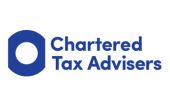
Headline changes for business in Labour's Autumn Budget
Labour’s first Budget in 15 years has now landed, leaving individuals and businesses of all sizes and in all sectors with plenty to unpack.
In the Autumn Budget, Chancellor Rachel Reeves announced a series of tax changes aimed at balancing economic growth with public spending needs.
Key areas targeted include capital gains tax, inheritance tax and national insurance. Sam Wightman, Corporate Tax Assistant Manager with Jerroms Miller Specialist Tax, looks at the headline changes and what they might mean for your business.
Limited companies
There was some relatively good news for limited company owners, with confirmation that the headline corporate tax rate will be capped at 25% throughout the current parliament term. Additionally, both the small profits rate and marginal relief will be preserved.
Reeves also highlighted the need for businesses to be able to invest in themselves. To this end, the government will continue to support the £1million annual investment allowance, uncapped full expensing, the writing down allowance and the structures and buildings allowance.
Current research and development (R&D) tax relief rates will also be maintained. HMRC will continue with its plan to establish a research and development advisory panel, as well as increasing signposting and guidance on the relief so more eligible businesses might feel encouraged to make claims.
Employers
Next up were employers, who arguably have been hardest hit by this Autumn Budget.
As predicted, both the national minimum wage and national living wage will go up next year.
Effective April 2025, the national minimum wage for 18-20 year olds will rise to £10 per hour, while the National Living Wage for employees aged 21 and over will increase by 6.7% to £12.21 per hour.
Rumours before the Budget that employers’ national insurance contributions were set to rise were also confirmed, with the rate of their NICs increasing from 13.8% to 15 % from April 2025. The effect of this rise has been further compounded with the news that the secondary threshold (the amount at which employers begin paying NICs) will drop from £9,100 to £5,000 from 6 April 2025 and be frozen until 6 April 2028.
To counter this increase, the employment allowance will rise from £5,000 to £10,500. In addition, the £100,000 employers’ NIC threshold for eligibility will be removed from 6 April 2025 which will provide a key relief to smalemployers.
Plans requiring employers to report and pay tax and class 1A NICs on benefit in kind on a real-time basis from April 2026 remain unchanged. The only benefits they will not need to report in real time will be accommodation and loans.
The rise in employer NICs is one of the Budget’s more far-reaching announcements as it hikes up the cost of employing people for all but the smallest businesses.
Individuals
Income tax: As widely expected, Reeves confirmed there will be no change to current income tax headline rates or thresholds. They will stay the same until April 2028. After that time, rates will be unfrozen and begin to increase in line with inflation.
Capital Gains Tax: Possibly the hardest-hitting announcement for business owners is the change to capital gains tax, with sharp rate hikes coming into effect immediately. The lower CGT rate is now 18%, up from its previous 10%, and the higher rate has risen to 24% from 20%.
It’s quite a jump, but it’s not as high as some commentators had feared, with some predicting a doubling of the higher rate to 40%.
Business Asset Disposal Relief (BADR)
Business Asset Disposal Relief (BADR) relief has also changed in the Autumn Budget – something else to factor in if you’re planning to sell your business. The 10% rate on gains up to £1 million remains the same for the rest of the tax year, but after 6 April 2025, BADR will increase to 14%, aligning with the lower 18% rate from April 2026.
While higher rates of CGT have been rumoured since Labour came to power, the news might still come as a shock to business owners, especially those currently formulating their exit strategy.
It’s now even more important that you take proper and effective succession planning to make sure you’re achieving your commercial goals as tax-effectively as possible.
EOTs
Higher CGT rates will make Employee Ownership Trusts (EOTs) appear even more attractive to business owners, as there is no CGT to pay on qualifying disposals.
But EOT have also undergone some changes in the Budget. The main one is an adjustment to the conditions required for obtaining relief – a move designed to ensure that the former owners cannot retain control of the company post-sale via the EOT.
EOTs continue to be a popular option for business sellers and are certainly worth considering for employers who meet the criteria.
Business Property Relief, Agricultural Property Relief and Inheritance Tax
Changes to Business Property Relief and Agricultural Property Relief from 6 April 2026 will have come as a blow to some individual taxpayers, especially farmers.
The first £1 million of combined assets transferred upon death will continue to attract 100% reliefs, but there will be relief of 50% on amounts above £1million. On top of that, relief for shares not listed on recognised stock exchanges, such as the alternative investments market (AIM), will fall to 50%.
Changes to inheritance tax reliefs will also be a cause for concern for business owners, however proper planning should mitigate tax exposure.
Other bits
As previously announced, value-added tax (VAT) on private school fees will be introduced at the standard rate of 20% from January 1 2025. However, in a surprise announcement, the government is also removing business rates relief from private schools with effect from April 2025.
Stamp Duty Land Tax has seen little change other than the surcharge on second homes, which has risen by 5%.
Interest rate on unpaid tax liabilities will increase by 1.5% from 6 April, in a move designed to encourage people to pay their tax promptly.








